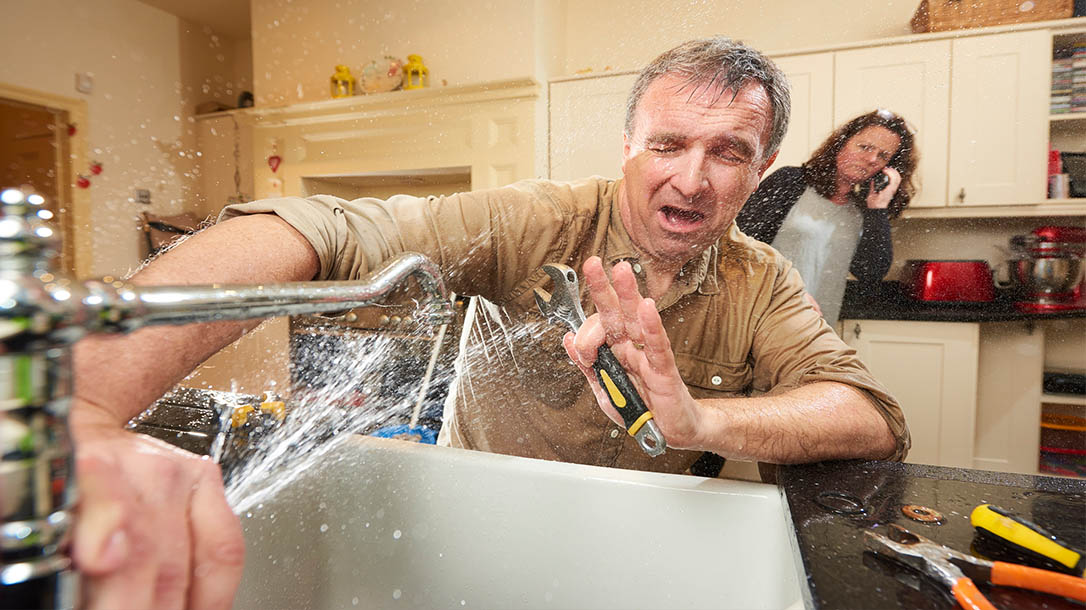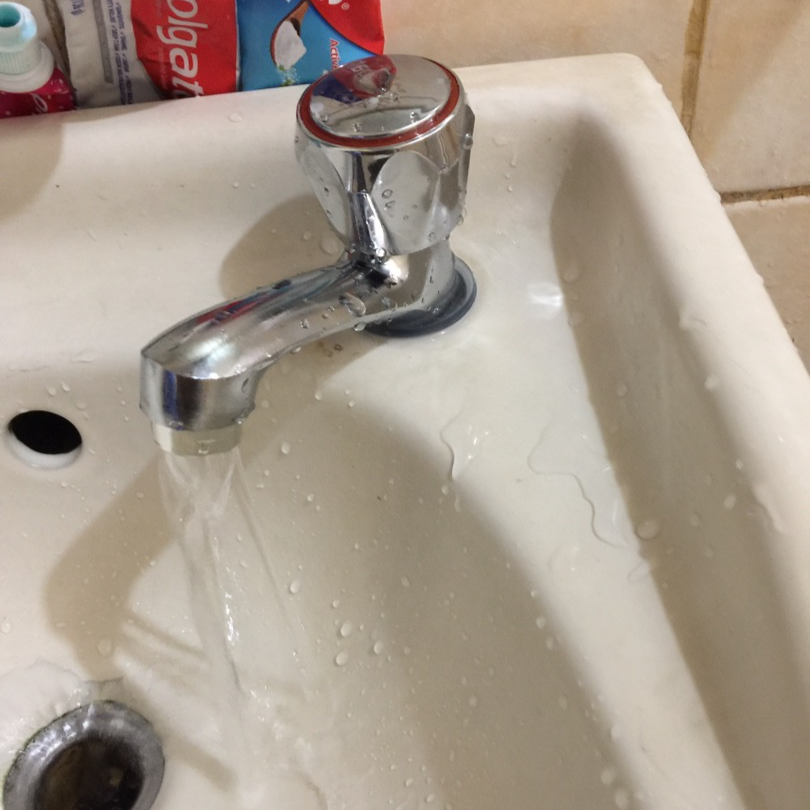Our Upsides of Repairing a Leaking Faucet
Our Upsides of Repairing a Leaking Faucet
Blog Article
Just how do you actually feel about Why It's Important to Fix Leaky Faucets?

Leaking taps may look like a minor hassle, yet their impact surpasses simply the nuisance of the noise. From wasting water to sustaining unnecessary economic costs and wellness threats, neglecting a leaking faucet can result in various consequences. In this article, we'll delve into why it's important to address this usual family issue without delay and successfully.
Wastefulness of Water
Ecological Effect
Dripping taps add considerably to water wastage. According to the Environmental Protection Agency (EPA), a solitary tap leaking at one drip per second can squander greater than 3,000 gallons of water each year. This not just stress water sources yet additionally impacts ecological communities and wildlife dependent on them.
Financial Prices
Increased Water Costs
Past the ecological effect, trickling faucets can blow up water expenses substantially. The accumulated wastage gradually equates into greater utility expenses, which can have been prevented with timely fixings.
Potential Residential Or Commercial Property Damage
Furthermore, prolonged trickling can cause damage to fixtures and surfaces bordering the faucet. Water buildup can cause discoloration, deterioration, and also structural problems if left unattended, causing additional fixing expenses.
Wellness Issues
Mold And Mildew and Mold Development
The continuous existence of moisture from a trickling tap produces a perfect setting for mold and mildew and mildew development. These fungis not just jeopardize interior air top quality yet additionally posture health threats, specifically for individuals with respiratory problems or allergic reactions.
Waterborne Conditions
Stationary water in leaking faucets can end up being a breeding ground for germs and other virus, increasing the risk of waterborne diseases. Contaminants such as Legionella bacteria flourish in stagnant water, potentially leading to major health problems when ingested or inhaled.
Do it yourself vs. Specialist Repair service
Pros and Cons of Do It Yourself Fixing
While some might attempt to fix a trickling faucet themselves, DIY repairs come with their very own set of challenges. Without correct understanding and devices, DIY attempts can intensify the issue or result in incomplete repairs, lengthening the issue.
Advantages of Employing a Professional Plumber
Hiring an expert plumber guarantees that the underlying cause of the dripping tap is attended to efficiently. Plumbings possess the knowledge and tools to detect and fix faucet concerns successfully, conserving time and lessening the risk of additional damages.
Step-by-Step Guide to Dealing With a Dripping Tap
Devices Needed
Prior to attempting to fix a leaking tap, collect the needed devices, including a flexible wrench, screwdrivers, substitute components (such as washing machines or cartridges), and plumber's tape.
Typical Tap Issues and Their Solutions
Identify the sort of faucet and the particular problem causing the drip. Usual issues include worn-out washing machines, rusty shutoff seats, or faulty O-rings. Refer to producer directions or online tutorials for step-by-step assistance on repair services.
Preventive Measures
Routine Maintenance Tips
To avoid leaking faucets, perform routine maintenance such as cleaning up aerators, inspecting for leaks, and replacing worn-out parts immediately. Additionally, consider installing water-saving tools or updating to more effective fixtures.
Value of Prompt Fixes
Resolving dripping faucets as soon as they're noticed prevents more water waste and possible damage, ultimately conserving both water and money over time.
Effect On Building Worth
Perception of Well-Maintained Building
Maintaining a home in good condition, consisting of resolving maintenance problems like trickling faucets, boosts its regarded worth and desirability among prospective purchasers or renters.
Influence on Resale Value
Qualities with properly maintained plumbing fixtures, consisting of taps, command greater resale worths in the property market. Addressing trickling taps can contribute to a positive perception during building assessments and arrangements.
Ecological Responsibility
Individual Contribution to Conservation
Taking responsibility for taking care of leaking taps lines up with more comprehensive efforts towards water preservation and ecological sustainability. Every person's activities collectively make a significant effect on protecting valuable resources.
Sustainable Living Practices
By prioritizing punctual repairs and embracing water-saving routines, people contribute to sustainable living techniques that profit both present and future generations.
Final thought
Addressing a trickling tap goes beyond simple benefit; it's an important step toward conserving water, decreasing economic expenses, and securing health and wellness and building. Whether through DIY repair services or expert assistance, taking action to deal with dripping faucets is a small yet impactful method to promote responsible stewardship of sources and add to a much healthier, a lot more sustainable future.
How to Fix a Dripping or Leaky Faucet
A leaking faucet is one of the most common problems that homeowners encounter, but it being commonplace doesn’t make it any less annoying. The constant drip drip drip of a leaking bathtub faucet, showerhead, or sink tap can disturb your home’s serenity. Left neglected, a dripping faucet can also result in higher water bills and discoloration or mold growth in your sink or plumbing fixtures.
Fortunately, you don’t have to be a trained plumber to know how to stop a dripping faucet. With some basic tools, replacement parts, and a little patience, leaky faucet repair is a breeze. In this article, we’ll explain what causes dripping faucets and how you can fix them.
What Causes a Leaking Faucet?
Kitchen and bathroom faucets come in all manner of designs, but most involve some combination of valves, O-rings, seals, and washers. The O-ring is usually the weakest link, but any one of these pieces can wear down over time. Heat, moisture, temperature fluctuations, minerals, mold, and movement can contribute to warping and corrosion, breaking the watertight seal. This just comes with the territory of being a homeowner. Everything is always subject to wear and tear, and some component parts of your appliances and fixtures need to be replaced on occasion. At least replacement O-rings are cheap!
More rarely, dripping faucets can be a symptom of excessively high water pressure. Were this the case in your home, you would probably notice that the leak is not isolated to one faucet. Water pressure issues are harder to resolve on your own. We recommend contacting a professional plumber if you suspect your water pressure is too high.
How to Fix a Dripping Faucet
Pipe wrench or monkey wrench Allen wrench set Screwdrivers Old towel or rag Shut off the water.
Before you do anything, you need to turn off the water to keep from drenching your kitchen or bathroom. You should find a valve under the sink and against the wall. Once you’ve turned this valve, try turning the faucet on to confirm that the water source has been cut off.
If you can’t locate your local valve for the faucet you’re working on, you can always shut off the water to the house at the main valve. Of course, this will prohibit anyone from using the sinks, showers, or toilets while you’re working on the faucet that’s giving you trouble.
Plug or block the drain.
You’ll be disassembling the faucet and removing some small bits of hardware. Plug the drain with a stopper or rag to avoid the possibility of a small screw falling into your P-trap.
Take apart the faucet assembly.
There are several varieties of kitchen and bathroom faucets, each with its own manner of assembly. For detailed instructions on how to disassemble your faucet, you can refer to the fixture’s manual or contact the manufacturer. If you know whether you have a ball, disc, cartridge, or compression faucet, you can find detailed schematics online.
In general, you need to begin by removing the faucet handles. You might notice a small screw that you’ll need to remove with a screwdriver or Allen wrench. If you don’t see any visible securing hardware, it’s likely hidden under a decorative cap that can be unscrewed or popped off with flathead screwdriver.
Remove each piece methodically, consulting a schematic when necessary. Take notes or arrange the pieces in such a way to make it easier to correctly reassemble the faucet later.
Remove the cartridge.
Once you’ve removed the handles and securing hardware, you should be able to remove the valve cartridge or stem. Some cartridges will slide right out. Other faucet models will require you to loosen a nut with a pipe wrench before you can remove the valve stem.
Examine the exposed hardware.
With the cartridge or stem removed, inspect the component parts. Check the rubber O-rings for wear and tear. Also examine the seat washer for corrosion or other damage. These pieces are usually the responsible parties for a dripping faucet, but it’s worth inspecting the other component parts while you have the faucet disassembled.
Find replacement parts.
Once you’ve identified which faucet component has failed, find an identical replacement. Your local hardware store should have O-rings, seat washers, and other standard components in stock. If you have a luxury or uncommon faucet, you may have to contact the manufacturer for a replacement part.
It’s a good idea to take your old parts with you to the hardware store so you can compare them with the store’s inventory and be sure you’re purchasing the correct replacement.
Reassemble the faucet.
With your new parts in hand, reconstruct the faucet and handles. Don’t be tempted to overtighten screws or nuts. You might think this could create a better seal, but it can instead damage or bend a delicate part of the assembly and create a new problem for you.
Turn on the water and test the faucet.
The only thing left to do is test your work. Unplug the sink, turn the water back on, and try the faucet. Congratulate yourself on a job well done!
https://www.libertyhomeguard.com/how-to-fix-a-dripping-or-leaky-faucet/

I'm very enthusiastic about Why It's Important to Fix Leaky Faucets and I'm hoping you enjoyed reading the entire piece. Sharing is caring. Helping people is fun. I love reading our article about Why It's Important to Fix Leaky Faucets.
Report this page